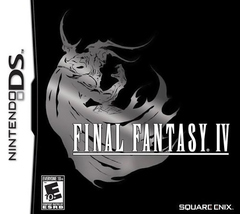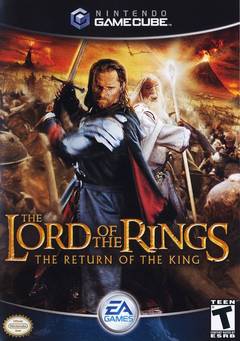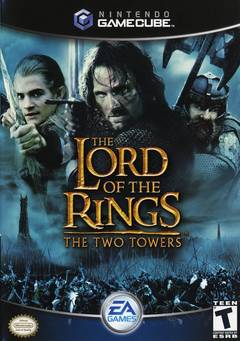gba
The Legend of Zelda
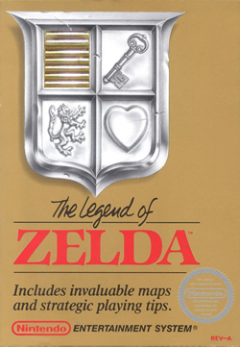 Achievement Unlocked: Review a game older than you.
Achievement Unlocked: Review a game older than you.
Zelda may be the most beloved video game franchise, but I've never counted myself among series super-fans. Since cutting my teeth on the series with Ocarina of Time, I've merely enjoyed all but a handful of games in the series. Don't get me wrong, they're all great, but I wouldn't put any in my top ten.
That said, I like checking out each title and comparing it with the rest of its ilk. Other than the experimental black sheep Zelda II: Adventure of Link, the first Legend of Zelda may be the series' most divisive game. Fans can't seem to agree whether the game's old school difficulty and unguided progression make it dated or just different. Lacking an in-game overworld map and never funneling players away from difficult areas, the NES original certainly requires more of its players than any Zelda since.
Nintendo recently launched its 3DS Ambassador program, giving the system's early adopters ten free NES games. I had been meaning to check out several of the ambassador titles, but none more so than The Legend of Zelda. Fifteen hours and a princess rescue later, I'm ready to weigh in on the Dated vs. Different debate.
The Hobbit
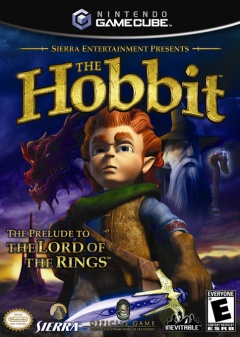 Marrying my wife a few months ago came with a videogamey bonus: a Nintendo Wii. And it wasn’t until several weeks back that I kind of realized that this system can also play GameCube games on it. The Nintendo GameCube is a system I missed out on hard, having only really played two games to my memory: Luigi’s Mansion and Pikmin. GameStops statewide seem to still sell a good selection of GameCube games, and I was able to pick up The Hobbit for less than a cup of coffee and a breakfast sandwich from the local market. As a true J.R.R. Tolkien fanboy, I couldn’t wait to play it. Alas, I had to wait. Long story short, I had to make a return trip to pick up a memory card so I could actually save my progress.
Marrying my wife a few months ago came with a videogamey bonus: a Nintendo Wii. And it wasn’t until several weeks back that I kind of realized that this system can also play GameCube games on it. The Nintendo GameCube is a system I missed out on hard, having only really played two games to my memory: Luigi’s Mansion and Pikmin. GameStops statewide seem to still sell a good selection of GameCube games, and I was able to pick up The Hobbit for less than a cup of coffee and a breakfast sandwich from the local market. As a true J.R.R. Tolkien fanboy, I couldn’t wait to play it. Alas, I had to wait. Long story short, I had to make a return trip to pick up a memory card so I could actually save my progress.
Anyways…The Hobbit. It came out in late 2003, and I’m assuming that its makers were banking on a lot of eager fans awaiting more Lord of the Rings action would be interested in seeing how the journey all started. In fact, blazing bright and gold on the game’s cover is some silly marketing pullquote that says “the prelude to the Lord of the Rings!” Yeah, we know. Hopefully they don’t pull the same silliness with the upcoming theatrical adaptation. The Hobbit, Part 1 of 2: The Prelude to the Lord of the Rings! Bad enough there’s going to be two films.
I’ve played a number of other games based on the Lord of the Rings over the years. Some were decent amounts of fun (The Lord of the Rings: The Two Towers), and others just an unfair mess (The Lord of the Rings: The Third Age). Will The Hobbit soar like the Lord of the Eagles or sink like the One Ring abandoning its former master? Let’s find out with the game’s first sixty minutes.
Broken Sword: Shadow of the Templars
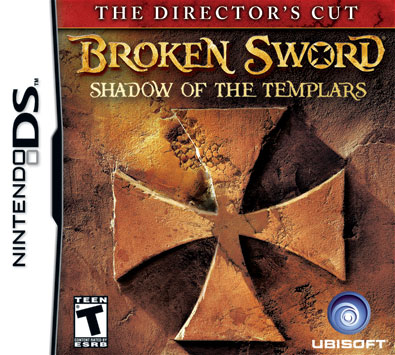 Broken Sword is not a new game. In fact, it was released back in 1996, a year so far gone that I barely remember anything about it. I know I did not experience Broken Sword then or even heard of it; I was just a lad with a PlayStation and a little RPG called Suikoden to occupy my time. Broken Sword only existed in my mainframe later on as a cult thing, something people talked about playing, but were never caught playing. I later played other point-and-click games like Maniac Mansion: Day of the Tentacle and Escape from Monkey Island yet never got to try this “classic.” Then I discovered it in my mother’s DS collection (yes, she plays) a few weeks back and found my chance to try it out for the very first time, some 14 years later. And this is the Director’s Cut which, I guess, means something.
Broken Sword is not a new game. In fact, it was released back in 1996, a year so far gone that I barely remember anything about it. I know I did not experience Broken Sword then or even heard of it; I was just a lad with a PlayStation and a little RPG called Suikoden to occupy my time. Broken Sword only existed in my mainframe later on as a cult thing, something people talked about playing, but were never caught playing. I later played other point-and-click games like Maniac Mansion: Day of the Tentacle and Escape from Monkey Island yet never got to try this “classic.” Then I discovered it in my mother’s DS collection (yes, she plays) a few weeks back and found my chance to try it out for the very first time, some 14 years later. And this is the Director’s Cut which, I guess, means something.
As it’s a story-heavy Nintendo DS game, this is only a half-hour review. I hope it hits all the points and really clicks! Um, I apologize for that…I know it was a stretch.
My JRPG Localization Wishlist
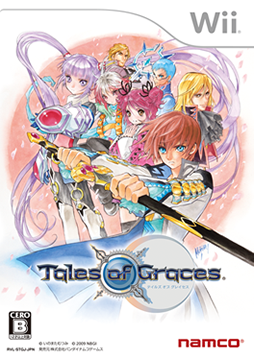 For years, Japan was the dominating force in the games industry. Ever
since Nintendo blasted onto the scene in the eighties, it's always been
my opinion that the developers in the land of the rising sun have had
the edge on everyone else. The Atari age has long since given way to
names like Nintendo, Sega, Sony, Capcom, Konami, Square, and so many
others. If I made a list of my hundred favorite games, I'd be willing to
bet that seventy or more of them come from Japan.
For years, Japan was the dominating force in the games industry. Ever
since Nintendo blasted onto the scene in the eighties, it's always been
my opinion that the developers in the land of the rising sun have had
the edge on everyone else. The Atari age has long since given way to
names like Nintendo, Sega, Sony, Capcom, Konami, Square, and so many
others. If I made a list of my hundred favorite games, I'd be willing to
bet that seventy or more of them come from Japan.
These days, however, the tide has shifted. The worldwide yearning for platformers and action games and traditional RPGs has been eclipsed by the first person shooter and sports game markets, two genres that Japanese developers are woefully unfamiliar with. Only the top games in each genre outside of Halo clones and Madden wannabes can make bank anymore, and developers are starting to play it safe with what they bring to the table. One genre affected by this trend is the JRPG, which has always had a focus in Japan, but also branched out to the world stage more often than not. These days, however, it seems Japan's favorite genre seems to be transforming more and more into Japan's shyest genre, rarely coming out to say hi to the rest of us.
In a rather shocking revelation, I've actually managed to find a hearty list of JRPGs that I pine for. I've never been the genre's biggest supporter, which doesn't surprise me in retrospect considering I never owned a SNES, Playstation, or Playstation 2 during their primes. However, I hereby pledge to buy any of the following games that come to America. I said the same thing about Tatsunoko vs. Capcom, thinking it would have no chance of arriving; I made good on my promise, bought TvC: Ultimate All Stars, and loved it. So it's on you now, localization teams. Make it happen.
The Legend of Zelda: The Minish Cap
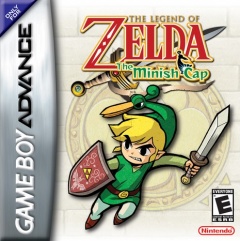 Over the course of The Legend of Zelda series, I haven't missed a lot
of games. I've played everything from Zelda II to Majora's Mask to
Oracle of Ages, but there was one that I had skipped: The Legend of
Zelda: The Minish Cap. Why that one? How could I have missed it? I
can only determine that my interest was low due to it being developed
outside Nintendo again (Minish Cap, the two Oracle games, and Four
Swords were created by Flagship, a former Capcom studio) and that it
missed the 2004 holiday window by a few weeks. Plus, for whatever
reason it seemed like a kids game. I always saw the feature of Link
turning into a pixie as... lame.
Over the course of The Legend of Zelda series, I haven't missed a lot
of games. I've played everything from Zelda II to Majora's Mask to
Oracle of Ages, but there was one that I had skipped: The Legend of
Zelda: The Minish Cap. Why that one? How could I have missed it? I
can only determine that my interest was low due to it being developed
outside Nintendo again (Minish Cap, the two Oracle games, and Four
Swords were created by Flagship, a former Capcom studio) and that it
missed the 2004 holiday window by a few weeks. Plus, for whatever
reason it seemed like a kids game. I always saw the feature of Link
turning into a pixie as... lame.
How wrong I was.
Five years later and I finally determine that it's high time to play The Minish Cap, so I add it to my Amazon wishlist and receive it for my birthday in May. I plowed through this game like my family's lives depended on it (meaning I ignored them in the process, whoops, won't happen again), but wanted to let the game sink in for a while before I organized all my thoughts and finished the review.
It's probably worth comparing my review of this game to the two previous portable Zeldas: Phantom Hourglass and Spirit Tracks. I always felt like those games were missing something, but I couldn't lay my finger on it until I played The Minish Cap. Here's my full review of the one I almost let get away: The Legend of Zelda: The Minish Cap.
Onimusha: The Best Series Everyone Already Forgot About
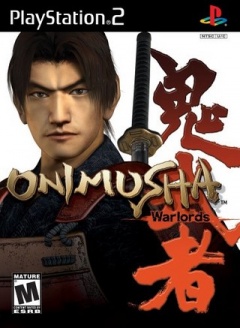 After a flurry of six games in just five years, there hasn't been another Onimusha game since March 2006. I understand that the series always played second fiddle to Capcom's other series, Devil May Cry, but man, Onimusha always had an awesome combination of historical inaccuracy and great hack-and-slash action.
After a flurry of six games in just five years, there hasn't been another Onimusha game since March 2006. I understand that the series always played second fiddle to Capcom's other series, Devil May Cry, but man, Onimusha always had an awesome combination of historical inaccuracy and great hack-and-slash action.
I played and loved the four main games in the series, even the one that takes place in France with Jean Reno. The first time I ever played an Onimusha game was at my uncle's house; the only thing I knew about Onimusha: Warlords was that it played like Resident Evil and was rated Mature. This seemed to indicate to me that the game would be scary or something, but what it turned out to be was simply a blast to play. Fast action, great puzzles, a storyline with famous Japanese figureheads that I recognized, and more gore than scare. My kind of game.
Super Ghouls 'n Ghosts
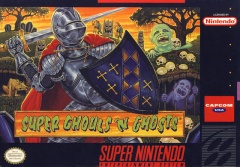 Super Ghouls 'n Ghosts is a
game I knew very little about. When I was about eight years old, a few of my friends said it was "the destroyer of worlds." Not just difficult, but impossible.
None of my friends could progress very far, and as an eight year old,
I wanted to prove to them that I was superior. Unfortunately,
none of them would lend it to me, and I never really had the money to
buy it and every time I went to the video store to rent it, it was always
out. I don't know if it was just that popular, or if they lost it. I'm
guessing the latter.
Super Ghouls 'n Ghosts is a
game I knew very little about. When I was about eight years old, a few of my friends said it was "the destroyer of worlds." Not just difficult, but impossible.
None of my friends could progress very far, and as an eight year old,
I wanted to prove to them that I was superior. Unfortunately,
none of them would lend it to me, and I never really had the money to
buy it and every time I went to the video store to rent it, it was always
out. I don't know if it was just that popular, or if they lost it. I'm
guessing the latter.
Now, I understand that it was made in 1991 by Capcom. It’s been ported to a bunch of different gaming platforms including the PlayStation, Sega Saturn, Game Boy Advance, PlayStation 2, Xbox, PlayStation Portable and Virtual Console on the Wii.
It is the sequel to Ghosts 'n Goblins and Ghouls 'n Ghosts, and also loosely related to Demon's Crest. I've played games like Contra and got pretty far before hitting a mark that was impassable for me, even at the wee ages of nine. So I figured… how hard can this game be? Here's the first hour of Super Ghouls 'n Ghosts.
Final Fantasy IV
Square's Final Fantasy IV was originally released in Japan on the Super Famicom in 1991 and was localized in the US as Final Fantasy II, since the previous two games weren't released in America.
Final Fantasy IV changed the face of RPGs and set the standard for the name final Fantasy for years to come. The storytelling was unparalleled in video games and the amount of detail lavished on the game was staggering.
For the 20th anniversary of the Final Fantasy series, Square-Enix remade FFIV in full 3D and released it on the DS in 2008, this time with the proper number in the title.
I've never played the original Super NES version, so this will be my first encounter with Final Fantasy IV. Can it hold up in this day and age?
Note: I considered reviewing this as a Half-Hour Handheld, but since it was originally released as a console game, I will go ahead and play it for the full hour.
The Lord of the Rings: The Return of the King
The second game in my marathon is The Lord of the Rings: The Return of the King. To simplify, I will assume you have already read my Two Towers review, so if you haven't you may want to do that first.
Return of the King (RotK) is the follow-up to The Two Towers. This game was released in conjunction with the movie, so it follows it much more closely. The levels are taken only from the final movie (which doesn't always correspond to the final book).
In order to one-up the previous game, RotK raises the number of playable characters from three to five right off the bat, with several unlockable characters as well. It also adds interaction within the environment, two-player co-op, and a bunch of tweaks such as graphical enhancements.
Will these changes be enough to help Return of the King surpass The Two Towers? Will its First Hour be as well paced as its predecessor? Or will neither of these things happen?
The Lord of the Rings: The Two Towers
This is the start of a marathon of Lord of the Rings gaming, in which I play the first hour of three games based on the Lord of the Rings movies. Strangely enough the three games are not one for each movie; there was in fact no game made for the Fellowship of the Ring movie. Instead, I'll be playing Lord of the Rings: The Third Age as the third game.
The Lord of the Rings is one of the most beloved series of books ever written, and the movies based on them are some of the best-selling of all time. What I want to find out is if the IP was able to make the jump to video games with the same fidelity.
I read these books some years back, before the movies came out, and they are some of my favorite books. Because of this, I may throw around a few terms that are unfamiliar if you have not read the books or watched the movies. If this is the case I strongly urge you to read the books.
Electronic Arts had the video game rights to the Lord of the Rings films (Sierra had the rights to the books; I'm not really sure how that works), but since the first film came out around the time the console cycle entered the next generation, EA decided to skip Fellowship of the Ring and instead focus on releasing a game that coincided with the premier of The Two Towers. Because of this, the game starts with several scenes from The Fellowship of the Ring.
Which stigma will this game live up to: Lord of the Rings, or movie game? Find out. Here's the first hour of The Lord of the Ring: The Two Towers for the Nintendo GameCube.

